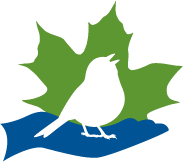By Neelakantan Sunder
We are very fortunate to have well-maintained and beautiful outdoor spaces here in Lexington. All are accessible in all four seasons.
I hike and photograph in a few of them on a regular basis. Whipple Hill is an area that is very close to my home and I go there almost 4-5 times a week throughout the year. Best parking is either on the north end where Winchester Drive changes to Johnson Road at the Winchester town line, or the southern entrance on Summer Street on the Arlington town line. I shall briefly write about some of the photographic technique and equipment I use in trying to capture the beauty of nature and some wildlife. I shall use Whipple Hill as an example of an outdoor space.
Every season the landscape changes and offers exciting possibilities of getting new images. Within Whipple Hill there are areas of wetland, pine forest, rock ledges and remnants of rock walls. There are opportunities to shoot macrophotography, wildlife, and exciting landscapes.
Photography- Equipment.
I prefer a Digital SLR but with the current technology any camera will do. If you want to photograph birds, it is best to have a long lens in the range for 400mm. It is good to have 9 a tripod/monopod for sharper photographs. A standard 50mm lens or a wide-angle lens can be very useful for landscape photography.
Basic Photography Techniques.
Light is better early or later in the day especially on sunny days. The colors of the spring and fall pop more on cloudy days and sometimes immediately after the rain. During the winter, snow and ice can be a bit tricky for exposure depending on the brightness of the sun. You may want to experiment with different settings to experience and evaluate the winter light. A tripod or monopod definitely improves the sharpness and quality of the image. In general you’ll need fast shutter speed for action like the birds in flight and small apertures (increased depth of field) for landscapes.
Spring – This is a great season where you can see life spring into action. The early bright green on the trees, buds on the bushes, the fronds and the fiddleheads of the ferns all add color and beauty to the landscape. The pond, vernal pool and the wetland areas are home to several varieties of waterfowl including mallards, hooded mergansers, wood ducks and of course Canada geese.
Early spring also brings several small migrating birds and they are more visible before the leaf cover takes over. It is common to see several varieties of woodpeckers, warblers, common grackle and red-winged blackbirds. I have seen red-tailed hawks and great blue herons regularly.
You’ll need a long lens for bird photography and tripod/monopods are very helpful. Plan on spending some time in one place if you want to photograph birds. They are very aware of movement and very easily fly away. Fast shutter speed is needed to catch them in flight. You can also see and photograph Painted turtles sunning on the rocks and driftwood in the pond.
Summer – The woods get dense in the summer and the trees are full and the pond is covered with water lilies and cattails. Please watch out for ticks and mosquitoes. Insect repellant and a tick check after every hike are musts in the summer.
Here is the link to Google drive where I have uploaded some of the photographs from Whipple Hill.
Feel free to contact me at [email protected] if you have any questions/comments. Happy shooting.
